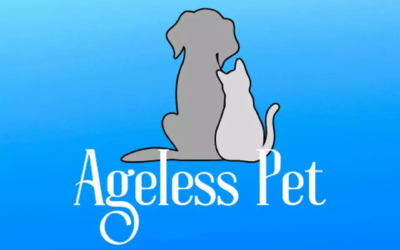
Why I Chose Pet Insurance—and Why It Matters

As a registered veterinary technician (RVT) and practice manager at Companion Animal Wellness Center, I wear many hats. While most of my duties are administrative these days, I still dive into treatments when needed—helping calm nervous pets, monitoring anesthesia, administering medications, and all the other daily tasks that come with veterinary care. With the depth of medical knowledge required to become an RVT (including passing both state and national boards—much like an RN in human medicine), I know just how critical it is to be prepared for medical emergencies.
That’s why pet insurance was a must for me.
If you’ve ever looked into pet insurance, you know it can be overwhelming. The market is flooded with companies—some familiar like Nationwide or PetsBest, others newer with catchy names like Lemonade or Pumpkin. Some are tied to big-box retailers or banks. I chose the company that was right for me and one that our practice also recommends: Trupanion.
It wasn’t the cheapest. They don’t offer multi-pet or professional discounts (which would be great—because let’s be honest, who in vet med only has one pet?). And no, despite what some might think, no one in this field is doing it for the money.
Here’s why I picked Trupanion:
-
Lifetime deductibles per condition
-
No payout limits
-
Direct payment to the hospital
Let me repeat that last one: they pay the hospital directly.
Why does that matter? Here’s my story.
My Dog’s Journey
A couple of years ago, my dog started limping. Given her symptoms, I suspected a torn knee ligament and braced for surgery. But the radiology report showed narrowing in her spine—her pain was from her back, not her knee.
We pursued both traditional and alternative treatments: herbal and western medications, acupuncture, rehab. I hadn’t purchased the alternative therapy rider, so I paid out of pocket for acupuncture and rehab. But Trupanion covered 90% of the rest—x-rays, labs, medications—paid directly to our hospital. I paid my 10%. That alone felt worth it.
Fast forward.
One Sunday, she was her usual playful, goofy self. Suddenly she began toe-touching with her left hind leg. Knowing her history, I massaged her back, gave her medication, laid her on her Assisi mat (a mat for PEMF- pulsed electro-magnetic field-treatment), and hoped for the best.
The next morning, I knew it was busy at work, so I didn’t bring her in right with me. Later, my husband called and asked if I had given her anything that made her act “drunk.” I hadn’t. I knew this was serious.
When I got home, I realized she had lost proprioception in both back legs—she couldn’t stand, urinate, or defecate. She could still wag her tail and eat, but her condition was urgent.
Dr. Pate saw her the next morning. Dr. Pate asked about her condition and realized how quickly it occurred and reached out to the local specialty office. We were able to get her in right away. After a neuro consult and an MRI, the diagnosis came: 80% spinal compression, requiring emergency surgery.
The treatment plan? Nearly $14,000.
What Would You Do?
That’s the reality. Without insurance, the upfront cost alone would prevent many from proceeding. Most people don’t have $14,000 lying around or room on a credit card. So, what would happen? A paralyzed dog? A heart-wrenching euthanasia decision?
I didn’t have to make that choice—because of insurance.
We all hope we never need it. But when you do, it’s priceless.
What I Tell Clients
As veterinary professionals, we’re often asked which insurance is best. The answer? It depends on you. A great resource is Pawlicy Advisor, which compares policies side-by-side. At our clinic, we recommend three:
-
Trupanion: Lifetime deductibles per condition, direct-to-hospital payment, but strict on pre-existing conditions.
-
Pumpkin: Covers exams and treatments (including alternative medicine) with no separate riders, and only a 14-day waiting period.
-
Nationwide: The only major insurer that covers exotic pets.
Why It Matters
I chose Trupanion. It saved me from massive debt, and possibly saved my dog’s life.
Veterinary medicine has evolved so much. We now have access to MRIs, CT scans, board-certified specialists, and cutting-edge treatments. But with this progress comes increased cost—technology, staff education, and time are expensive.
Veterinary professionals aren’t getting rich. We do this work because we care—because we love animals and want to help people make the best decisions they can.
Insurance won’t be right for everyone, but it gave me options when I needed them most. And in my professional and personal opinion, that peace of mind is everything.
Controversies in Spaying and Neutering Dogs Episode 12
Controversies in Spaying and Neutering Dogs Episode 12
The World of Supplements, it’s a Buyer Beware Market Episode 10
The World of Supplements, it's a Buyer Beware Market Episode 10
Acupuncture in Pets: Episode 13
Ageless Pet Acupuncture in Pets: Episode 13

